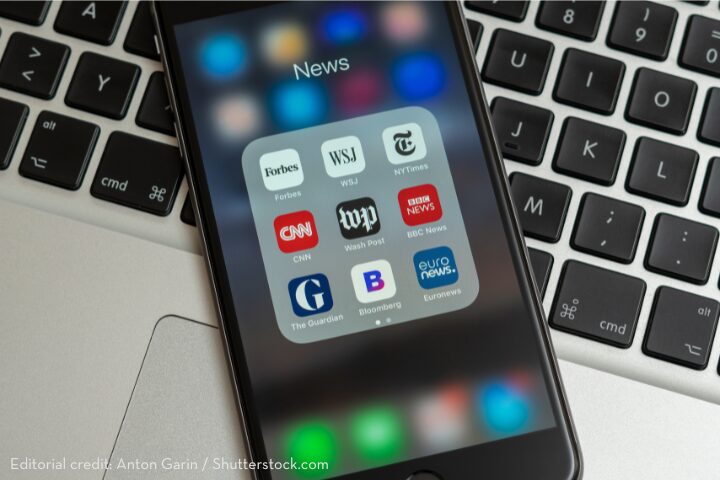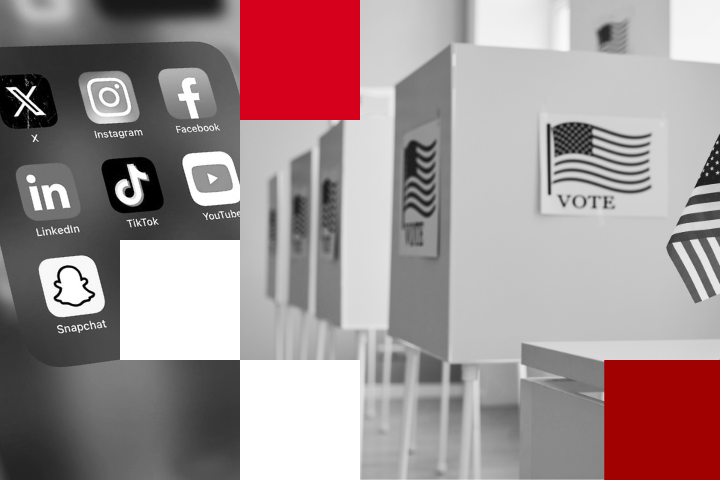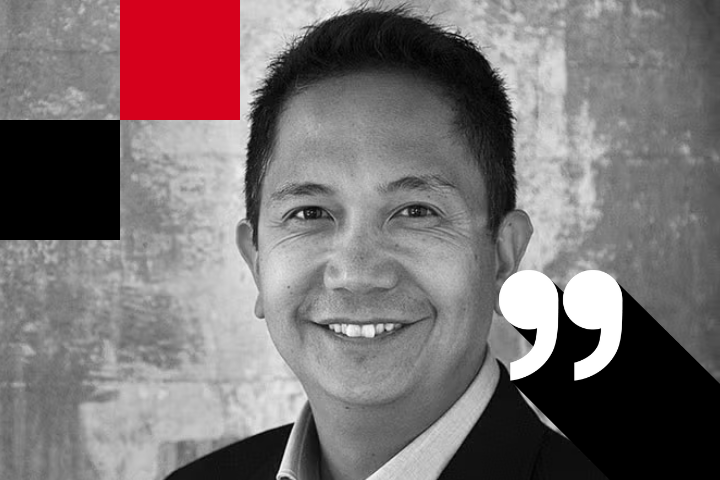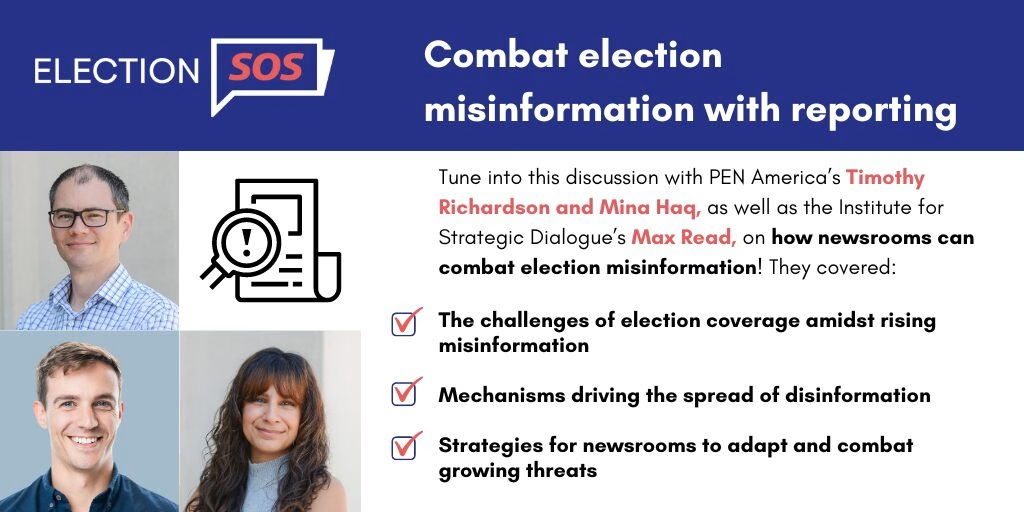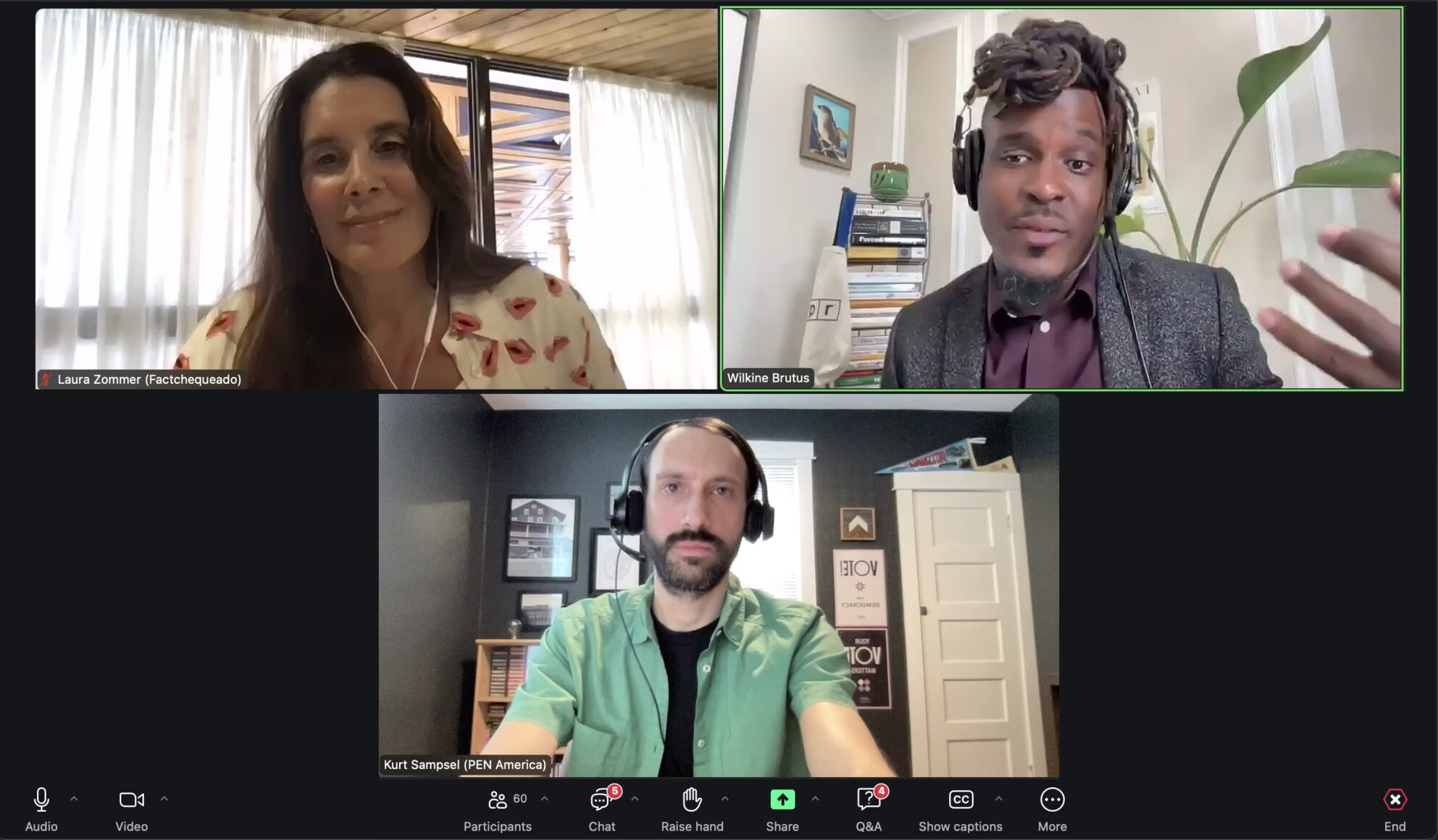This Q&A is part of a series of interviews with journalists and experts who regularly handle disinformation. The interviews will appear regularly through the election and beyond to highlight best practices, insights, case studies and tips. Our goal is to provide a resource to assist reporters and community members through the news events of 2024.

Dannagal Young is a professor of communication and political science at the University of Delaware and director of the university’s Center for Political Communication. She studies the content, audience, and effects of nontraditional political information and how people make sense of their political worlds.
Her TED Talk on how psychology shapes politics and how those psychological differences are being used to divide has been viewed over 2 million times. We talked to Young about that phenomenon – specifically how false information that threatens one’s identity is especially salient, as well as what journalists can do when covering those identity-focused narratives.
This interview was lightly edited for length and clarity.
You spoke in your TED Talk about the psychology of belief and why people have the political ideals they have – how liberals are often more tolerant of threats and ambiguity, and conservatives are often monitoring for threats and prefer certainty. How does that relate to misinformation? Are liberals more likely to believe certain strains of misinformation vs. conservatives? What’s the reasoning behind that?
In the U.S. context at least, there does appear to be an asymmetry in the production and dissemination of online misinformation – with more coming from the cultural right and supporting more culturally conservative perspectives.
There are several mechanisms that I think underlie this asymmetry. One is the higher need for cognitive closure and greater reliance on heuristics and emotions that we find among cultural conservatives than we do among cultural liberals. With this greater threat monitoring system comes a need to make decisions quickly and efficiently – hence the higher need for closure and the greater tendency towards heuristic judgments. And while this can be a tendency that aids in survival under real conditions of threat, it can also make folks more prone to errors in judgment formation, especially in an information environment as hostile and filled with propaganda as ours is today.
A second mechanism at play has to do with the inextricable link between misinformation and identity threat, coupled with the socio-demographic homogeneity within the Republican Party – an overwhelmingly white, Christian, rural, and culturally conservative party, thus making what political scientist Lilliana Mason calls the all-encompassing “Republican Mega-identity” especially salient because of the primal identity categories that overlap. For people who are monitoring for interpersonal threat by default – because their genetic predisposition is to flood the body with cortisol or have heightened arousal at the mere thought of hostile outgroups, misinformation that threatens group identity will be especially resonant. When this same group has a salient political identity that overlaps with their religious, racial, and cultural identity, that threat activation is all the more potent.
By and large, this is what strategic disinformation does. Most of the false information disseminated online is not random. Conservatives are not inherently more likely to be misinformed. But in a climate in which social identity threat is weaponized through disinformation, they may be better positioned to be activated by such content.
What advice do you have for journalists who are trying to be responsible and fair in their coverage while working within a business model and social media environment that can incentivize anger and engagement?
The tension between the economic imperatives of media (clicks, likes, shares, eyeballs, and attention) and the requirements of democracy have never been more at odds. The only ways forward are 1) for journalists to pursue, develop, and embrace alternative mechanisms of engagement (like solutions journalism, which has shown to activate attention and engagement) 2) for journalistic institutions to embrace alternative economic models (like subscription services over advertiser support, thus minimizing the need for attention-grabbing clickbait) or 3) for citizens to stop rewarding outrage and identity-threatening content with attention.
What are your biggest concerns about the spread of misinformation in this election cycle? How well have journalists done while covering conspiracy theories and falsehoods?
My biggest fear is always out at the margins. It is out at the margins, among those people who have the most extreme ideologies, who consume the most outrageous content and the most hate- and misinformation-fueled content, where I worry about the location of that tipping point, where attitudes and beliefs become behavior.
But, at the same time, I’ve also been influenced by the work of Emily Thorson, whose research shows the extent to which Americans are misinformed about the very basic details of public policy – everyday things like how social security works and what the national debt actually is. While wild conspiracy theories can lead to political violence under a very narrow set of circumstances, the extent to which misperceptions about basic public policy can shape people’s lives in meaningful ways every day is staggering. I think we saw these two phenomena – conspiracy theories and policy misperceptions – come together in a devastating way after Hurricanes Helene and Milton, for example. A lack of understanding about what FEMA does and how initial emergency aid works, combined with conspiracy theories about where FEMA money was alleged to have “gone instead.” The result was attacks and threats on FEMA workers, plus Americans who lost everything not seeking the financial help they needed and were entitled to – and that was very much available to them.
What do you think journalists can do better in that regard?
It would help if journalists recognize that sometimes the drivers of belief in misinformation do not involve exposure to explicit misinformation at all, but rather content that merely activates our social identity or social identity threat. I believe most journalists want to discourage belief in misinformation. And if they do, then they should be actively pushing back against partisan identity-threatening stories that lack substantive content. This means not rewarding those performances of identity threat that come from national lawmakers seeking attention. This means focusing on issues and public policy.
You’ve also spoken about the way political and media elites divide liberals and conservatives. How do you think the “other side is the enemy” narrative contributes to the spread of disinformation?
Our belief in falsehoods is driven by our need to comprehend the world, have control over it, and community, all as informed by our social identity, or our membership on a team. When our team identity is salient in our mind, it will inevitably drive our sense-making processes. The most efficient way to activate a social identity is always to threaten it. So when politicians frame the other side as threatening our way of life, we will be increasingly motivated to see the world in keeping with our team, thus fueling misperceptions that reinforce our identities.
Are you concerned about the rise of generative AI, specifically political deepfakes? Do you have any advice for journalists who encounter them in their coverage?
The deepfake situation is fascinating because belief in misinformation doesn’t even require exposure to misinformation itself. Belief in falsehoods simply requires a desire to believe something that serves an underlying need. So while imagery and video can provide increasingly realistic “evidence” to support our perceptions of the world, people have historically believed in some of the most preposterous, low-quality photoshop jobs ever, simply because they want to. My sense is that if journalists spent time dissecting why false information and AI imagery may satisfy certain needs, it could be a more successful path forward than simply declaring a piece of content to be “false”
How do you think political journalists can gain readers’ trust as political polarization grows?
If polarization grows, then I fear there is no hope for mainstream journalists to gain the trust of strongly partisan readers. Among more centrist partisans or independents, however, there may be a thirst for a form of journalistic content that is more issue-based, substantive, and does not focus on the spectacle and identity-threatening content that characterizes our current political culture. To the extent that a news organization is able to meet that need, perhaps audience trust is within reach.
Dannagal Young has published over 70 academic articles and book chapters on the content, psychology, and effects of political information, satire, and misinformation. Her latest book, “Wrong: How Media, Politics, and Identity Drive our Appetite for Misinformation,” explores the demand side of misinformation – why we are attracted to falsehoods. Her first book, “Irony and Outrage: The Polarized Landscape of Rage, Fear, and Laughter in the U.S.,” examined satire and outrage as the logical extensions of the respective psychological profiles of liberals and conservatives. She has published essays and op-eds in outlets including Vox, The Washington Post, and The Atlantic, and appeared on CNN, PBS Newshour, ABC News, NPR, and various national and international podcasts. Young holds a phD from the University of Pennsylvania’s Annenberg School for Communication.

